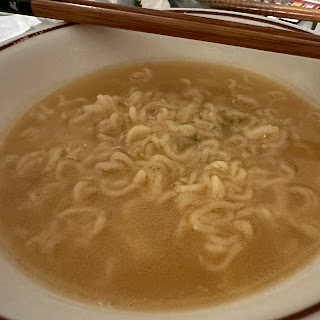 |
| International version |
The title of this post might be strange. This is what I meant: the comparison between the Japanese version of the same brand (e.g. Nissan) Noodles and the international version of the same instant noodles.
 |
| Japanese version |
If you ever wondered whether they might be different, you are correct. They are quite different. In fact, if you blindfolded me and asked me to do a taste test, I would not be able to tell that both are from the same brand.
 |
| International version |
 |
| ready to serve International version |
I've always thought that the Nissan Instant noodles we know of were the standard until I moved to Tokyo and realized they are very different. There was a day I was craving that oiliness of Nissan noodles, however, when I went to the store and bought a packet that "looked" similar enough to be the Nissan Ramen I am familiar with, but to my surprise (and disappointment)... it wasn't.
 |
| Japanese version: uncooked |
 |
| Japanese version: ready to serve |
Here are some differences I noticed.
Differences between Nissan noodles:
| Japanese version | International version | |
|---|---|---|
| Noodle type | baked, not fried, contains bits of dried ginger and other condiments | fried, a bit of an oiliness, plain |
| Noodle texture | thin, firm and has a heavier chewiness, | thick, slightly porous and has a light chewiness, also a bit oily |
| Taste (broth) | saltier, richer flavour and healthier tasting (similar to egg noodles), heavy on ginger taste (with noticeable ginger bits) | lighter brother, everything is "well balanced" and gives you a comfort food taste. Heavier on sesame |
| Noodle prep time | 1.5 minutes (in boiling water) | 3 minutes (in boiling water) |
| Calories | 306 calories | 450 calories |
It has hard to choose which one I prefer because both are good and different (in a good way). The International version is more of a comfort food, while the Japanese version seems healthier and more preferred if I want a ramen meal (for dinner).
Which do you prefer?
For those interested, here are more photos and info about each version of ramen. While reviewing the images, I realized the instructions have changed since I reviewed these noodles (on their old packaging)... so please ignore the differences in directions (between the review and the images... I'll make amendments in a bit.)
Nissin International Version:
highlights:
made in Hong Kong
Made in Japan




No comments:
Post a Comment